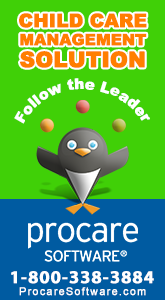ExchangeEveryDay Past Issues
 << Previous Issue
| View Past Issues | | Next Issue >>
<< Previous Issue
| View Past Issues | | Next Issue >> -Lin Manuel Miranda
"Signs point to an increase in challenging and difficult behaviors in young children, such as excessive tantrums, lack of impulse control, and aggression with peers," writes Michelle Forrester and Kay Albrecht in their book, S.E.T. Social Emotional Tools for Life. "Experienced teachers report that working with children is more difficult now than in the past, and that they are faced with behaviors that don't seem responsive to teaching techniques that have worked before.
"Psychologists, pediatricians, and early childhood intervention specialists confirm this reported increase in the number of children with developmental disorders. As diagnostic techniques improve, these disorders are being identified earlier. Autism is just one example of a developmental disorder that is on the rise. The rate of autism is 1 in 88, up from 1 in 2,500 twenty years ago. This pervasive developmental disorder is characterized by a range of delays in the emotional, social, language, physical and/or cognitive domains of development. It includes disturbances in one's ability to relate to others, and is often accompanied by language delays and sometimes by cognitive impairment."
 |
|
Exchange has a number of resources on working with children with challenging behavior including:
|
|
 |
|
|
This Week Only Offer Expires Friday, April 3, 2015! |
|
Special offer expires Friday, April 3, 2015 at 11:59 pm PDT.
May not be combined with any other offer.




Comments (9)
Displaying 5 of 9 Comments [ View all ]Monroe BOCES #1
Rochester, NY, United States
Update on Autism rates in US
About 1 in 68 children has been identified with autism spectrum disorder (ASD) according to estimates from CDC's
the grand child care center
chicago, IL, United States
Al most all of the above comments have points. Also it has a lot to do with parenting style. These parents born in 80s grew up watching too much TV and playing Nintendo and Video games are now raising their offspring ! In Gujarati language there is a sayings : if there is a water in the wel; then you can fatch it! But if there is no water at all then what can you do with a pot? Simmilerly - these children are not getting right directions at home and school teachers have their own issues..God bless all of us....
Edmonds, Washington, United States
I guess I should have said -previous- posters since I have no idea what anyone after me may post. ;)
Edmonds, Washington, United States
I agree with the above posters and would also like to add that children now have very distracted parents who are rarely fully present in the daily lives of their children because of their attachment to their cell phones.
United States
I agree with what is already posted, but need to add that our children are also being exposed to so many more toxins than ever before in so many forms. This can also have a negative behavioral effect on them. I worked in early childhood education 1987-2003 and saw how behaviors changed so dramatically over those years. When I first started working with children, maybe one child in an entire program had allergies. One or two may have had other diagnoses. By the end of my career, every classroom had several children with allergies, many of those severe enough to warrant an epi-pen. Children in every classroom were diagnosed with behavioral disorders. Why is this? What is happening to our food system, our environment, the amount of medications, etc. we give young children? I also encourage teachers to become knowledgeable about illnesses such as PANDAS - behaviors can have a physical root - especially with all that these little bodies are bombarded with continuously.
On top of all that, expectations are inappropriate. Children are expected to sit and listen for long periods of time. All work and little play. Their lives are super structured. It's so sad.
I now homeschool my children and am studying to become a certified Nutritional Therapy Practitioner. I still have dreams of opening a play based, child-led, home-like early childhood program, but don't know if I can do it now.
Post a Comment